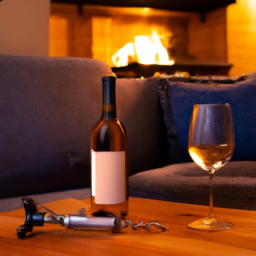February flew right by — the weather was fairly normal but a bit milder, especially the last week of the month. Then a big surprise: really warm weather the following week, which had everyone reaching for their favorite bottle of wine to enjoy under the sun. But do you know just how much alcohol is in that glass you're sipping on?
We share the alcohol content of wine—from sparkling to white, red, or rosé varieties. See how much is in each type, from lowest to highest. Starting with the lightest, sparkling wines typically have the lowest alcohol by volume (ABV), ranging from about 9-12%. Prosecco, for example, is usually around 11% ABV. Moving on to white wines, they usually fall in the range of 12-14% ABV, with some exceptions like Moscato with lower levels. Red wines tend to have a slightly higher ABV, ranging from 13-15%, and rosé falls somewhere in between at around 12-14% ABV.
So how does South-West co-operative winery group Plaimont manage to produce a 9.2% ABV wine without de-alcoholising it? Their secret lies in the grape varieties they use and the fermentation process. By selecting grapes with naturally lower sugar levels and controlling the fermentation process carefully, they are able to achieve a lower alcohol content while maintaining the wine's flavor and complexity.
As the newly proposed alcohol taxes kick in for Thailand, Nimmi Malhotra looks into the impact on the country's wine trade. With the potential increase in taxes, the cost of wine production and consumption could rise, affecting both local wineries and importers. This could lead to changes in pricing and availability of wines for consumers in Thailand.
Alcohol, put as simply as possible, is created when the sugars in harvested grapes undergo fermentation. This means that the only way for winemakers to control the alcohol content of their wines is by managing the sugar levels in the grapes and the fermentation process. By choosing grape varieties with lower sugar content and fermenting the wine for a shorter period, winemakers can produce wines with lower ABV.
Caposaldo Moscato is a popular choice for those looking for a low-alcohol wine. Nicole Haarklau, corporate director of food and beverage for Coury Hospitality, says it's a favorite among customers due to its sweet and fruity flavors, as well as its lower alcohol content. This makes it a great option for those looking for a lighter wine to enjoy without the high ABV.
We sampled more than 20 bottles of nonalcoholic wine and found our favorite reds, whites, rosés, and sparkling wines. Nonalcoholic wines are a great option for those looking to enjoy the flavors of wine without the alcohol. These wines go through a similar winemaking process as traditional wines but undergo de-alcoholization before bottling, resulting in a product with less than 0.5% ABV.
The proposal would have raised the state's beer and cider tax from $2.60 per barrel to more than $70. The wine tax would have spiked from 65 cents per gallon to $2.50. These tax increases would have had a significant impact on wineries and consumers, potentially leading to higher prices for wine and reduced demand. It's important for lawmakers to consider the implications of such tax hikes on the wine industry before making any decisions.
Plus, an Italian red and a California sauvignon blanc for this week's sips.
